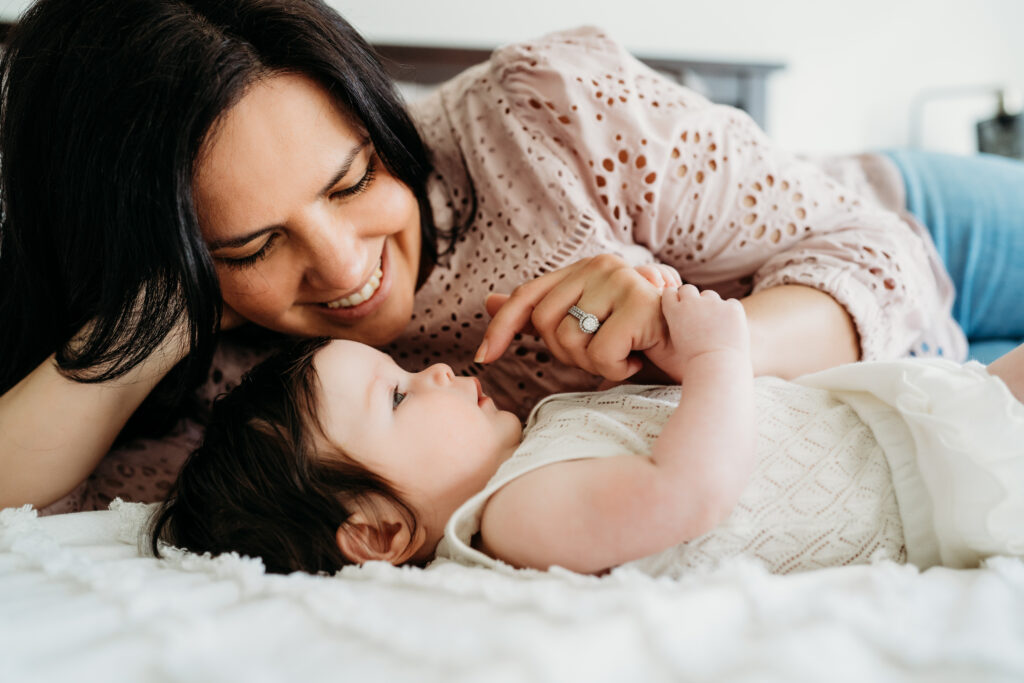I was 12 when I got my first period. It came earlier than it did for most of my friends, which meant I had no one to compare my experience to. I assumed what I was going through was normal—because no one ever told me otherwise.
But it wasn’t. Not even close.
Every month, for a full 24 hours, I was in agony. I would curl up on the floor, crying to my mum, begging her to explain why it hurt so much. She reassured me, the way mothers do, that period pain was just part of life. It was the same story at the doctor’s office—just period pain. Take some Panadol, get some rest.
So I did. I took the painkillers, even though swallowing tablets was something I had to teach myself. I’d cut them into quarters, making them small enough to manage, hoping they’d dull the pain. They never really did.
When I finally saw a GP about it, they put me on the pill. A “set and forget” solution. I didn’t question it.
For 10 years, I stayed on the pill, believing this was just how periods worked. Believing I was just someone who struggled with pain.
I met my husband in my late 30s, and something in me already knew that getting pregnant might not be easy. I had been to my GP twice, long before we started trying, just to check if everything was okay. I was reassured that my AMH reserves were great. No one mentioned endometriosis. No one even suggested looking deeper.
At 39, we got married. At 40, we started trying.
We did all the pre-screening tests. Everything was “normal.” No red flags. No warnings. We fell pregnant naturally on our first try, and for the first time, I allowed myself to believe I had worried for nothing.
Then I miscarried.
It happened so quickly, and yet it felt like time stood still. It was horrific. I felt numb and broken. But once again, I was told the same thing—miscarriages happen. It was common. Just keep trying.
Six months passed, and nothing happened. I suggested seeing a fertility specialist. We started IVF. Our first cycle gave us five embryos. One was transferred, and I was pregnant again.
And then, another miscarriage.
That’s when panic set in. Something was wrong. I asked my specialist if we should investigate further. Instead, I was told I had embryos left, so I should just “keep going.”
I felt like I was on a conveyor belt, being shuffled from one cycle to the next. Transfer. Failure. Transfer. Failure. The process felt mechanical. Cold. No one was listening.
Desperate for answers, I found an immune fertility specialist who recommended a laparoscopy. I was 41 when I finally woke up from surgery to hear the words:
“You’ve got endometriosis, and I removed it all.”
Just like that. Like it was nothing. Like it hadn’t shaped my entire life. No real explanation. No discussion. Just a dismissive, “Don’t worry about it, keep trying.”
For years, I had been told it was normal. That I was overreacting. That I was weak. That the pain was just part of being a woman. But now, suddenly, they had found something. And it had been there all along.
I started piecing things together myself. The bloating, the crippling pain, the discomfort during ovulation. As I got older, the symptoms had worsened, but I had accepted them. Because that’s what I had been taught to do.
By this point, I had lost two pregnancies, endured multiple failed embryo transfers, and spent over a year and a half desperately searching for answers.
The only thing keeping me going was the dream of having a baby. I put my trust in doctors who barely looked beyond the surface. I followed every instruction, took every medication, and kept pushing forward, even when I felt abandoned.
Then, I found a new specialist at Adora Fertility and for the first time, I felt heard. I sought out second opinions, and demanded better care. It was the best decision I ever made.
At 43, after an embryo transfer, I got pregnant for a third time. And this time, it worked.
Now, I have my miracle baby, Olivia.
I also now have the strength and passion to share my struggles with others in the hopes of helping them, creating the podcast IVF Real Talk as a platform for others to know that they’re not alone.
Looking back, I wish I had fought sooner. I wish I had questioned everything. I wish I hadn’t let doctors dismiss me over and over again.
So if you’re struggling with unexplained pain, if something doesn’t feel right—fight for answers. Push for more testing. Get that second opinion. Because pain is not normal. And you deserve to be heard.
Feature image: Yaelle Ohana with her family.


